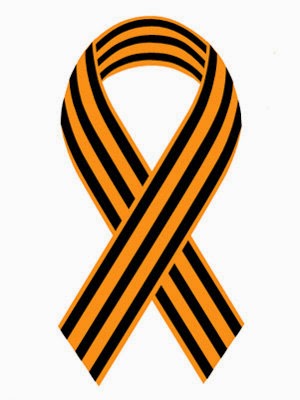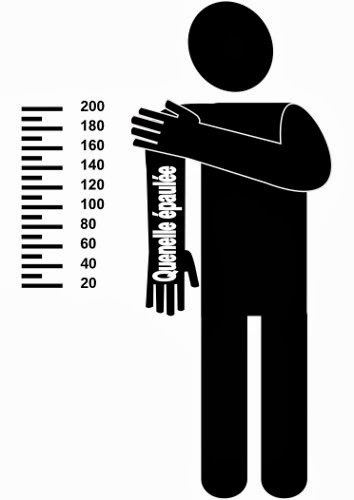Wednesday, December 19, 2007
Taleban Ambush in the Mountrains: a video analysis
Maybe it is because I did my basic training in the mountains, or maybe its because I just love them; the fact is that I have always been fascinated by how mountains totally change the face of presumably 'modern' warfare. In the mountains, a horse if much better than an APC, helicopters are sometimes very useful and at times utterly useless, a platoon can stop a regiment, air strikes are often impossible to execute and triangulating a radio transmitter position becomes a nightmare. Nothing wears down engines as well as mountain operations.
Mountains are truly the ultimate defensive terrain.
In the mountains the weather can change in less than one hour from balmy hot to a hellish blizzard. Roads which appeared reliable only yesterday can simply disappear overnight. Soldiers need much more food and water just to survive while the supply lines are always compromised. Logistics become a nightmare and even cooking can be a challenge for an untrained person.
I have just come across this short video of a Taleban ambush against what appears to be a small resupply convoy. It seems to be lead by a truck which is a rather bizarre concept, (unless there is a guide in it or some locally hired people are used as 'mine clearing personnel'). The video is of poor quality and I cannot really tell. What is really interesting here though, is how well this video shows the degree to which mountains restrict movement and thus give a huge advantage to any ambushing force. The vehicles in this video are totally stuck and cannot move anywhere, even well into the attack.
The ambushing force seems to be composed of only one machine gun operator, one RPG operator, at least one spotter (you can hear the radio traffic), a couple of AK shooters (you can hear but not see them) and the camera operator. Just imagine what a platoon sized force could have done to the convoy (identified on the LiveLeak website where I found the video as "4th Platoon D Company getting ambushed on the KOP Road. Korengal Valley 1-32 Inf 10th Mountain").
Speaking of the radio traffic. One of the most effective way to protect any force in such terrain is to place radio intercept positions on mountain tops. Such positions are usually easy to protect, to resupply and, if needed, to evacuate. They are also ideal to intercept enemy radio traffic between the spotter and the ambushing force. As I mentioned before, triangulating the exact position of the radio signal is hard because such signals tend to bounce off the mountain sides, but it is possible to isolate a general area. Here is how a radio intercept force would protect the convoy:
Anywhere between 3 to 5 radio intercept positions would be placed in carefully selected mountain tops each manned by by a small number or electronic warfare pioneers and a small covering force. 10-12 men in total are plenty. They would be in radio contact (ideally via encrypted and frequency hopping communications) with a electronic warfare HQ (typically a EW company HQ). A datalink would be even better. Any radio traffic would be reported to the HQ, ideally recorded and possibly translated by a language specialist, and plotted on a map. The intelligence officer would then match than up with the planned troop movements for the day and if a spike in traffic was detected in the area of movement of a convoy an alarm could be triggered and a covering force sent: either attack helicopters or transport helicopters dropping off a protecting force (one or more platoon-size units) on the high ground above the threatened convoy. At least one vehicle in the convoy should be able to act as a FAC. In most cases the ambushing force will detect the arrival of the protection force and call off the attack.
Another highly effective tactic is counter-ambushing in which a special operations unit is covertly dropped several days in advance in a likely ambush location and waits for the insurgent force to take up position and to attack before destroying it (they are most detectable at the time when they bury the mine or IED which is supposed to hit the first vehicle).
In this case it appears that the US forces are not making full use of such capabilities. They should have learned from the experience of the Soviet forces in Afghanistan which used such tactics with great success (with rather basic hardware, I would add).
Anyway - take a look for yourself and see for yourself what a mountain ambush looks like. Notice that the RPGs are being fired at a distance which is bigger than their ideal one (about 100-150 yards only for poorly trained operators) and that the first IED/mine does not explode under the truck, but under the first Humvee. Typically, that the entire attack takes less than a couple of minutes.
The Kurds have a saying that "the Kurds have no friends but the mountain". I would only add that this is also the best friend to have.
Mountains are truly the ultimate defensive terrain.
In the mountains the weather can change in less than one hour from balmy hot to a hellish blizzard. Roads which appeared reliable only yesterday can simply disappear overnight. Soldiers need much more food and water just to survive while the supply lines are always compromised. Logistics become a nightmare and even cooking can be a challenge for an untrained person.
I have just come across this short video of a Taleban ambush against what appears to be a small resupply convoy. It seems to be lead by a truck which is a rather bizarre concept, (unless there is a guide in it or some locally hired people are used as 'mine clearing personnel'). The video is of poor quality and I cannot really tell. What is really interesting here though, is how well this video shows the degree to which mountains restrict movement and thus give a huge advantage to any ambushing force. The vehicles in this video are totally stuck and cannot move anywhere, even well into the attack.
The ambushing force seems to be composed of only one machine gun operator, one RPG operator, at least one spotter (you can hear the radio traffic), a couple of AK shooters (you can hear but not see them) and the camera operator. Just imagine what a platoon sized force could have done to the convoy (identified on the LiveLeak website where I found the video as "4th Platoon D Company getting ambushed on the KOP Road. Korengal Valley 1-32 Inf 10th Mountain").
Speaking of the radio traffic. One of the most effective way to protect any force in such terrain is to place radio intercept positions on mountain tops. Such positions are usually easy to protect, to resupply and, if needed, to evacuate. They are also ideal to intercept enemy radio traffic between the spotter and the ambushing force. As I mentioned before, triangulating the exact position of the radio signal is hard because such signals tend to bounce off the mountain sides, but it is possible to isolate a general area. Here is how a radio intercept force would protect the convoy:
Anywhere between 3 to 5 radio intercept positions would be placed in carefully selected mountain tops each manned by by a small number or electronic warfare pioneers and a small covering force. 10-12 men in total are plenty. They would be in radio contact (ideally via encrypted and frequency hopping communications) with a electronic warfare HQ (typically a EW company HQ). A datalink would be even better. Any radio traffic would be reported to the HQ, ideally recorded and possibly translated by a language specialist, and plotted on a map. The intelligence officer would then match than up with the planned troop movements for the day and if a spike in traffic was detected in the area of movement of a convoy an alarm could be triggered and a covering force sent: either attack helicopters or transport helicopters dropping off a protecting force (one or more platoon-size units) on the high ground above the threatened convoy. At least one vehicle in the convoy should be able to act as a FAC. In most cases the ambushing force will detect the arrival of the protection force and call off the attack.
Another highly effective tactic is counter-ambushing in which a special operations unit is covertly dropped several days in advance in a likely ambush location and waits for the insurgent force to take up position and to attack before destroying it (they are most detectable at the time when they bury the mine or IED which is supposed to hit the first vehicle).
In this case it appears that the US forces are not making full use of such capabilities. They should have learned from the experience of the Soviet forces in Afghanistan which used such tactics with great success (with rather basic hardware, I would add).
Anyway - take a look for yourself and see for yourself what a mountain ambush looks like. Notice that the RPGs are being fired at a distance which is bigger than their ideal one (about 100-150 yards only for poorly trained operators) and that the first IED/mine does not explode under the truck, but under the first Humvee. Typically, that the entire attack takes less than a couple of minutes.
The Kurds have a saying that "the Kurds have no friends but the mountain". I would only add that this is also the best friend to have.





